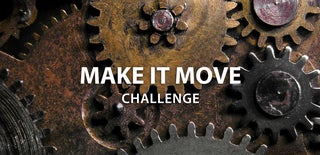Introduction: How to Make a RC Trainer Airplane
After my second model, the DHC-2-Beaver which was a huge hit, I thought why not make another model that is just for beginners in RC Aeromodelling, which looks beautiful, and is simple to build? I think this Trainer model is stunning and flies much better than the previous airplanes, Also I think it is perfect for those flyers who like to fly slowly and steadily. I searched the web for inspiration and decided to make my plans with a few minor changes.
Please feel free to check out my previous Instructables RC DHC Beaver to get a basic understanding of the electronics and their installation.
Step 1: Materials Required
For the Model -
- Rubber wheels or some old toy car wheels https://www.amazon.com/BokWin-Black-Model-Aircraf...
- Packaging Tape and Acrylic colors
- Foam board or depron sheet https://www.amazon.com/Thickness-Polystyrene-Sign...
- Scissor & cutter's
- Glue gun
- Metal wires
- Plywood for landing gears
- Plywood for motor mounting
For the Electronics -
- RC Transmitter & Receiver
- RC Brushless motor
- lipopolymer battery 2200 mAh
- Digital servos
- ESC ( Electronic speed controller )
- Servos extension and Y harness extensions
- 1045 propeller
Step 2: Design & Schematic's
- Here are the plans for the plane I designed; simply copy the parts onto a foam sheet and cut them out with a cutter.
- The schematics contain dimensions and other information.
Step 3: The Fuselage
- Refer to the design and schematics when building the fuselage.
- Copy all of the fuselage parts onto foam board and cut them out with the cutter.
- Now, for the fuselage structure, we will create an internal strength structure and divide the fuselage into three compartments, as shown in the images above.
- Once we've completed the landing gear assembly, we'll apply another layer of foam to the fuselage bottom.
Step 4: The Tail
- We'll now assemble the fuselage and stabilizers.
- Make a cut at the end of the fuselage to accommodate the horizontal stabilizer.
- Repeat the process with the vertical stabilizer. Insert the vertical stab after making a horizontal cut in the middle.
- The horizontal and vertical stabilizers should now be glued to the tale section.
Step 5: The Wing
- This is the most important section because it determines your airplane's characteristics.
- To make the wing, take a thin steel rod and some foam strips and glue them to the dot lines image1.
- Heat the wing and fold it along the dark line shown in image 1.
- We'll make two 30-cm partial cuts on each end of the wing, make V cuts, and use packaging tape as hinges so the ailerons can move in both directions.
Step 6: The Landing Gear
- To make the landing gear assembly bend the metal wire and attach the wheels using washers and nuts.
- You can make this part using various methods and your own ideas because there are numerous ways to make landing gear.
- Attach it to the plywood and glue it to the fuselage once completed.
Step 7: The Motor Mount
- For the motor mount, place the motor on the plywood piece and stick it at the leading edge, keeping in mind that the motor should be facing downwards; because the angle matters, the push will generate downwards, allowing the lift to be created.
- Now Glue the motor mount in front of the fuselage with a glue gun and cover it with packaging tape.
Step 8: The Electronics
- Whenever it comes to electronics, you should make careful choices because they will determine how well your plane performs.
- For the brushless motor, I recommend Sunnysky because their motors are more efficient than the others.
- I recommend AVIAN ESC or E-flite ESC for the ESC because they are smarter and work more efficiently.
- I recommend Spektrum smart batteries for lipo batteries because they provide more flight time.
- 10g or 20g digital servos are ideal for servos.
- I would recommend the Spektrum NX8 as a transmitter and receiver because it has many features.
- To install the control surfaces, we must first install the servos and control horns on the rudder, elevator, and aileron.
Step 9: The Maiden Flight
- We're nearly there; all that remains is to foam-coat the bottom and top of the fuselage and to design a removable top portion for the front compartment, which will house the battery.
- Before the fight, make sure that all of the control surfaces are operational.
- Before taking off, check the plane's CG.
- Check that all of your electronics are in working order.
- We're ready to install the propeller and take our maiden flight.

Participated in the
Make it Move Challenge











